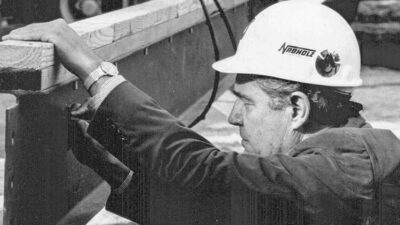As sustainability continues to shape the construction industry, the U.S. Green Building Council (USGBC) has released LEED v5, the next evolution of its green building rating system. Designed to address climate change, resource efficiency, equity, and occupant health, LEED v5 introduces significant changes that every contractor should be aware of.
What Is LEED v5?
LEED (Leadership in Energy and Environmental Design) is a globally recognized green building certification program. Version 5 is the most ambitious update since LEED v4, focusing on measurable outcomes, carbon reduction, and equity. It’s currently being piloted for New Construction and Interiors, with broader rollout expected in the future.
Key Changes in LEED v5 Impacting Contractors
- Focus on Carbon
LEED v5 puts a strong emphasis on carbon emissions, both embodied and operational. For contractors, this means:
-
- Material selection must prioritize low embodied carbon products.
- Contractors may need to track carbon emissions during construction.
- Life Cycle Assessment (LCA) data and Environmental Product Declarations (EPDs) are now critical documentation.
- Construction Waste Management
LEED v5 tightens the requirements around waste:
-
- Higher diversion rates and reduced total waste generation.
- More accountability for source separation and reuse on-site.
- Contractors are expected to document practices and work with haulers that provide detailed reporting.
- Enhanced Indoor Environmental Quality (IEQ)
Contractors must ensure compliance with stricter:
-
- Ventilation and filtration standards during and after construction.
- Low-emitting materials across a broader range of categories.
- Moisture control and air quality testing before occupancy.
- Worker Equity and Safety
A new dimension of LEED v5 focuses on equity and social impact:
-
- Safe and equitable job sites are encouraged.
- Local hiring, diversity in hiring practices, and fair wages may earn project points.
- Contractors may need to submit data on workforce demographics and conditions.
- Integrated Design and Commissioning
Contractors are more deeply integrated into the design-build-performance loop:
-
- Preconstruction coordination for LEED charrettes and early decision-making.
- Active involvement in enhanced commissioning and post-occupancy evaluations.
- More emphasis on monitoring systems and ensuring they are installed correctly.
Contractor Action Checklist for LEED v5 Projects
- Get familiar with LEED v5 credit requirements early in the project.
- Train field teams on carbon tracking, waste management, and IEQ best practices.
- Use products with verified EPDs, HPDs, and Declare labels.
- Work closely with design teams and sustainability consultants.
- Implement a digital documentation system to simplify LEED credit tracking.
Why It Matters
Contractors who adapt quickly to LEED v5 will be positioned to win more sustainable construction projects, meet stricter client demands, and contribute to a more resilient and just built environment.
As LEED v5 moves from pilot to widespread adoption, staying informed and engaged will help contractors thrive in a greener future.

